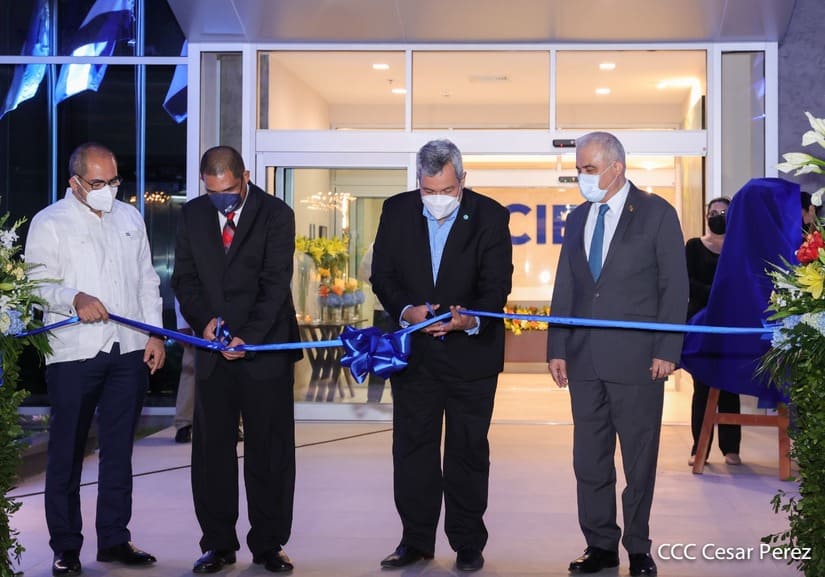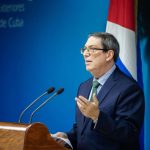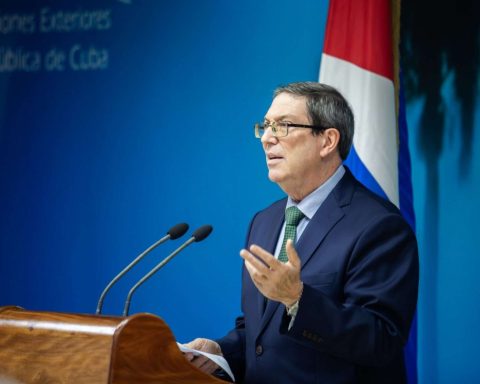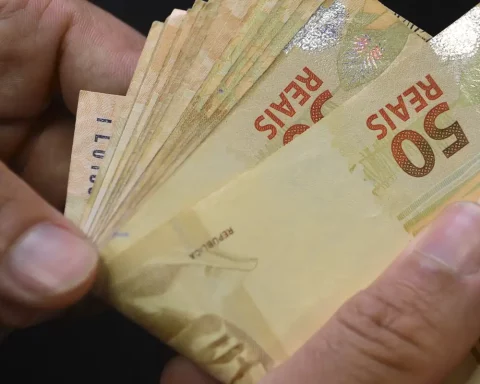The president of the Central Bank of Nicaragua (BCN), Ovidio Reyes, assured this Tuesday that the gross domestic product (GDP) of the country, grew 10.3% in 2021. Shortly after, the Minister of Finance and Public Credit, Iván Acosta, ratified the data.
The statements of both officials of the dictatorship of Daniel Ortega, occurred during the act with which the new headquarters was inaugurated of the Central American Bank for Economic Integration CABEI), in Nicaragua, what seals the relationship between the Nicaraguan president, and the executive president of that regional entity, Dante Mossi.
“2021 was a year of economic recovery and the return to growth of the Nicaraguan economy, after it was affected by various shocks since 2018 and the covid-19 pandemic at the beginning of 2020,” Reyes saidwhile detailing that preliminary estimates indicate that the accumulated growth of GDP during 2021 will be around 10.3%, after -2% of 2020.
This growth would be supported by data fromthe Monthly Report of Economic Activity (IMAE), according to which, “the sectors with the highest accumulated growth during the year were exploitation of mines and quarries (40.6%), construction (35.5%), commerce (16.1%), manufacturing industry (13.7%) and hotels and restaurants (10.5%)”.
The data compiled by the economists of the governing body of finance in Nicaragua, suggest that the country would have returned to the path of growth, according to two data offered by Reyes, who said that the performance of the fourth quarter of 2021 was similar to that observed in the first quarter of 2018.
The second is the forecast that in 2022, the economy will grow between 4.0% and 5.0%as long as the growth projections for private investment and exports are met, for the external sector, and for construction, commerce and manufacturing, at the local level.
The Central Bank forecasts that inflation will close the year oscillating between 5.0% and 6.0%, showing a slight acceleration during the first semester, and that it will moderate in the second.
In the challenges section, Reyes said that “fears persist of the emergence of variants of covid-19 that could prolong interruptions in global supply chains,” and that geopolitical tensions they can push oil and other commodity prices higher“which poses inflationary risks and impacts that would affect supply and demand at a global level.”
In terms of opportunities, food exports are expected to continue to grow, both in terms of volume and price, and that the country benefits from the relocation of value chainsthat US companies are bringing from Asia to America, a phenomenon called ‘nearshoring’, “which could lead to greater foreign direct investment, exports and job creation,” the BCN expects.
Squeezing taxpayers
The growth announced for 2021 would be accompanied for 26.5% increase in tax collection of the Central Government, which Reyes justified with the dynamism of economic activity, despite the fact that both independent economists and businessmen have repeatedly rejected the effects of the 2019 tax reformas well as the fiscal harassment they sufferand which leads to an increase in payments to the state.
“The deficit of the Non-Financial Public Sector was reduced to 1.5% of GDP in 2021 versus 2.5% in 2020. Likewise, public debt was reduced to 64.2% of GDP versus 64.8% in 2020, and maintained sustainable levels, which contrasts with observed in most economies”, which increased their deficits and their public debt, Reyes said, ignoring that these countries launched support programs for companies, while the Ortega Administration focused on denying the risks of the pandemic, and leave entrepreneurs to their fate.
The performance of 2021 would have generated a reduction in the unemployment rate, which the head of the BCN placed at 4.3% in the third quarter of last year, based on data from the Nicaraguan Institute of Information for Development (Inide), while the number of affiliates to the Nicaraguan Social Security Institute increased by 46,748 contributors during 2021, which is 6.5% higher than what was observed in December 2020.
On the other hand, the combination of exogenous and internal factors caused inflation to rise to 7.21%, which exceeds the 2.93% growth measured in 2020.
“The global economic recovery” would have favored the increase in external flows, particularly due to merchandise exports, (23.1% last year, versus 5.8% in 2020); and those of free zones, (36.8% in 2021, and 14.7% in 2020). Family remittances increased 16% (10% in 2020), and foreign direct investment showed a tendency to recover, especially in the energy and mining and telecommunications sectors.
Reyes said that “revenues from tourism reflected a quarter-on-quarter recovery, although in the aggregate for the year they decreased 7.4%”, after falling 61.5% in 2020, “due to the continuity of the restrictions associated with the pandemic.”
Finally, he pointed out that the Gross International Reserves totaled 4,046.6 million dollars at the end of 2021, “which represented an increase of 834.7 million dollars compared to 2020 and the equivalent of a coverage of 2.8 times the monetary base, an adequate level that supports the stability of the current exchange rate regime.

















